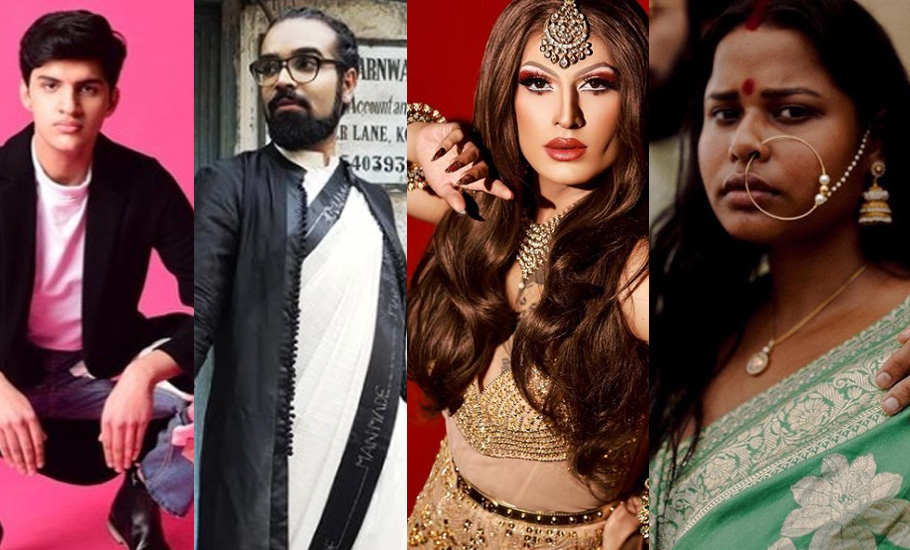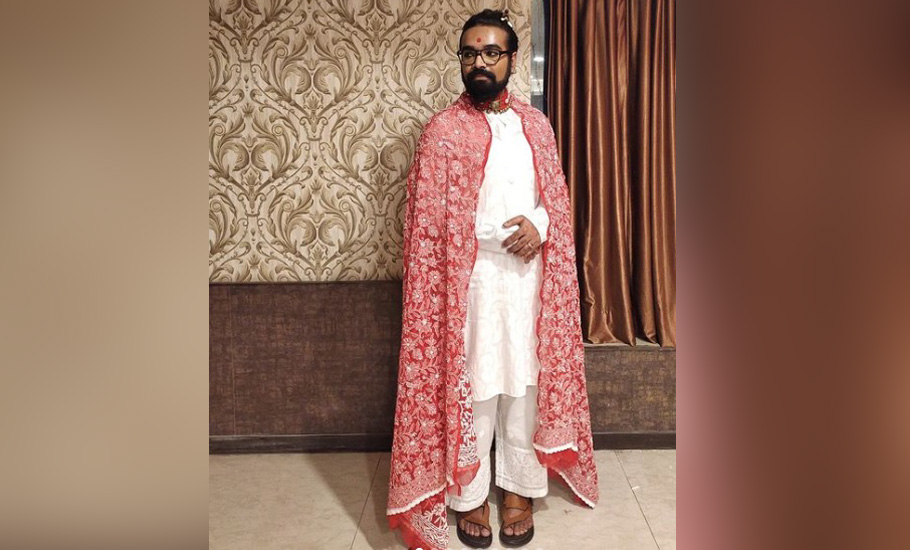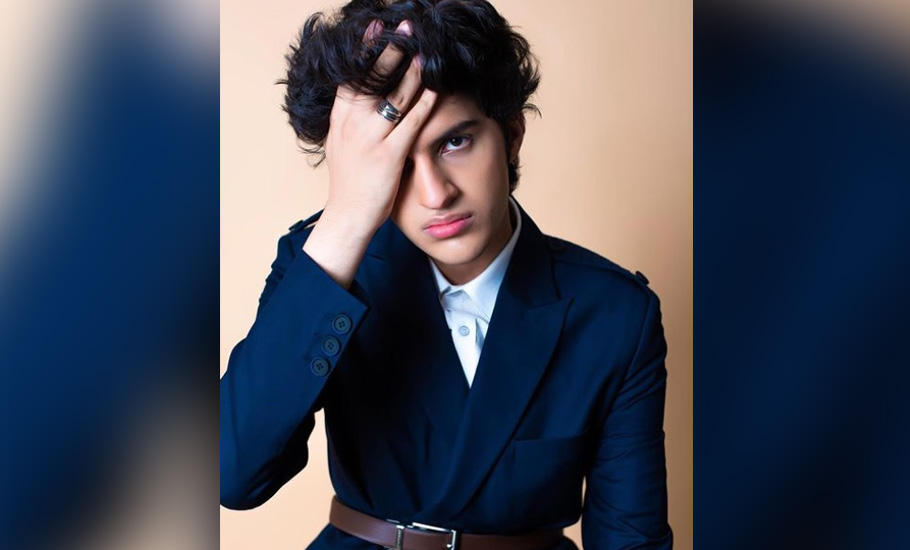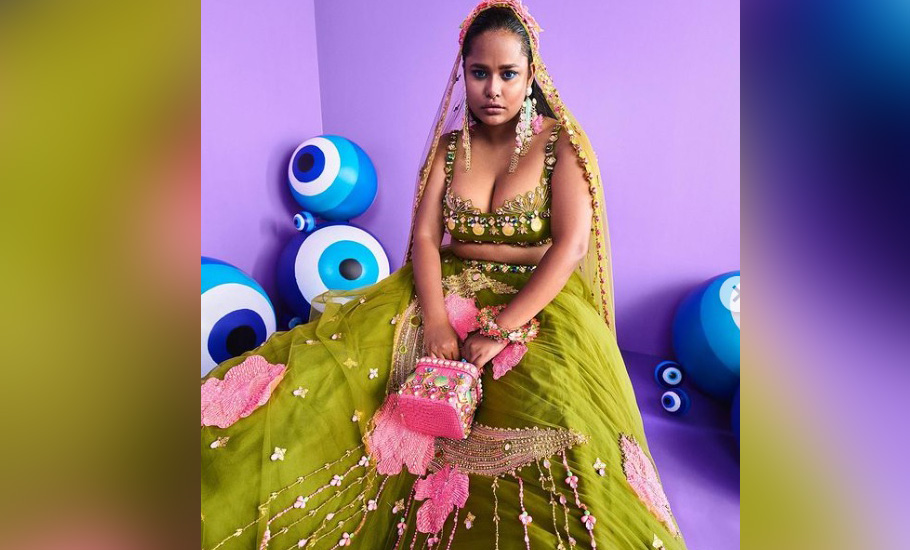
- Home
- News
- Analysis
- States
- Perspective
- Videos
- Education
- Entertainment
- Elections
- World Cup 2023
- Features
- Health
- Business
- Series
- Economy Series
- Earth Day
- Kashmir’s Frozen Turbulence
- India@75
- The legend of Ramjanmabhoomi
- Liberalisation@30
- How to tame a dragon
- Celebrating biodiversity
- Farm Matters
- 50 days of solitude
- Bringing Migrants Home
- Budget 2020
- Jharkhand Votes
- The Federal Investigates
- The Federal Impact
- Vanishing Sand
- Gandhi @ 150
- Andhra Today
- Field report
- Operation Gulmarg
- Pandemic @1 Mn in India
- The Federal Year-End
- The Zero Year
- Premium
- Science
- Brand studio
- Home
- NewsNews
- Analysis
- StatesStates
- PerspectivePerspective
- VideosVideos
- Entertainment
- ElectionsElections
- Sports
- Loading...
Sports - Features
- BusinessBusiness
- Premium
- Loading...
Premium

Fashion puts its inclusive foot forward in India

At 26, Pushpak Sen from Kolkata is a global icon of sorts. When he travelled to Italy last year for his fashion studies, his baggage consisted of six Bengal weave saris. This believer in androgynous fashion is at home draping the six-yard and confidently slaying the scene – be it the corner tea shop in a buzzing Kolkata neighbourhood, or dazzling the fashion capital of the world,...
At 26, Pushpak Sen from Kolkata is a global icon of sorts. When he travelled to Italy last year for his fashion studies, his baggage consisted of six Bengal weave saris. This believer in androgynous fashion is at home draping the six-yard and confidently slaying the scene – be it the corner tea shop in a buzzing Kolkata neighbourhood, or dazzling the fashion capital of the world, Milan. Elegantly carrying India’s national dress, Sen accessorises his look with a fiery red lip colour, black sunglasses and, of course, the trademark red bindi. He maintains that his love for the sari goes beyond the gender-defined role, and his masculinity is in no way affected by the grace of the six yards.
Sen is not the only fashion disruptor. The last few years have seen Indian fashion put its stylish foot forward in unchartered territories. Inclusivity in fashion dawned big time in India with designer Sabyasachi Mukherjee’s plus-size and dark-skinned muse Varshita Thatavarthy. Once rejected by fashion houses, Vizag girl Thatavarthy found in Mukherjee a designer who was not afraid to mould fashion in his wake. Thatavarthy soon became a central figure in Mukherjee’s oeuvre, and to quote the designer, “I couldn’t take my eyes off her.”

Since then, Thatavarthy has gone on to model for many prominent designers, among them another staunch believer of genderless fashion, Suket Dhir. The Delhi designer, who dressed Nobel laureate Abhijit Banerjee at his Nobel function, has a line for women, uncharacteristically named—He for She—that comes with a distinct masculine silhouette. He explains his love for androgyny to The Federal, “Ours traditionally is a land where a garment is as much for the man as for the woman. Be it the angrakha, achkan, mundu, dhoti, kurta, shalwar, churidar, the kediyu tops of Rajasthan or the shirts paired with ghaghras or shalwars in Haryana and Punjab, genderless fashion has been in our roots.”
And why stop at just Sen and Thatavarthy? The last few years have seen the disabled to even trans people making strides in the world of fashion. Hailing from the Kollam district, Paathu Fathema in her 20s is handling modelling projects with aplomb with her prosthetic leg. In fact, seeing the growing demand for inclusivity in fashion, Delhi-based Nninjas Models started by former model Nninja Singh has inclusivity as its calling card. In fact, it gave India its first model with autism – Pranav Bakhshi.
Like Mukherjee and Dhir, other big names in Indian fashion such as Ekaya Banaras, House of Masaba, Rahul Mishra, Gaurav Gupta and more are also not shying from using non-binary models and models who do not fit the usual tall, fair, skinny profile. Couturier JJ Valaya believes, “We are human beings first and everything else later. What right do we have to be exclusive when it comes to God’s created beings? In our world, we welcome all who yearn style, irrespective of gender, colour, shape, size or any other manmade parameter.”

But the going isn’t always easy. While the fashion world has accepted plus-sized and dark-skinned models, acceptance of non-binary models and senior citizens is still at an evolutionary stage. Some brands do showcase trans models from time to time, but seniors as models are still a no-no. Maybe it has to do with the fact that in our minds seniors are associated with a sedentary lifestyle, caring about their grandkids. To prop them up as fashion models seems unthinkable to most.
Trans model, actor and singer Sushant Divgikr, who is currently in Los Angeles, tells The Federal, “I just think that this whole pretence about ‘including’ people and the several facades of this charade must stop. We are Indian and we have traditionally been inclusive. It’s when we started adopting the western bigotry that came with British colonisation that we started sinking in our self-made catastrophic quick sand of delusion.” Divgikr reiterates Dhir’s words about how our kings and queens and even our gods and goddesses wore androgynous clothing, adding, “This new-found division and the need to scream inclusivity from the rooftops is doing more harm than good.”
Tans model and actor Naaz Joshi has different views. “Honestly we are still living in a world that doesn’t accept trans women as women. I am often asked to walk the ramp only for LGBTQ+ collection. Most transgenders undergo expensive surgery to look like a girl in order to be accepted. Fashion has not accepted us at all.”
It is indeed surprising that while androgynous fashion labels such as NorBlack NorWhite, Antar-Agni, Moral Science, Bloni and more are spearheading genderless fashion, trans models are still feeling left out.

Ranveer Singh and Babil from Bollywood may still be rocking the skirt or palazzo moment on and off the red carpet and Valaya and Mukherjee may be designing chunky jewellery for men, but people like Sen are still to be accepted by the larger masses. Though some brands like Red Lotus have been winning hearts for featuring trans models in their campaigns.
If women can easily be accepted in pant suits and tuxedos, it’s time we accept a Sen sporting a sari. After all, clothes do not have a gender. Divgikr and Joshi may have different views, but the fact is that the fashion industry is slowly waking up to a new phase – one where it is fashion first, and everything else later.

